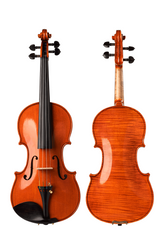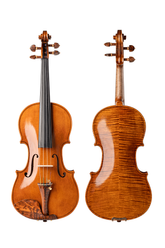What is the violin set up?Fiddlover 11-Point Adjustment
What is the violin set up?
Set up is the adjustment of each component of the violin, so that the overall performance of the violin can be optimized. Set up is not a bunch of fixed data, but a process of overall coordination and dynamic change. The process of learning to set up is also a process of getting familiar with your violin “temperament”, each handmade violin has its own personality, which can only be better understood through long-term company. Our violins will be inspected at 11 points before delivery, so that you can play them directly when you get them. But don't be lazy, you must learn to set up by yourself while playing, When faced with different environments and different problems make different set up,this is also part of the charm of the violin.
Learn more about our craft will help you better understand our 11-point adjustment:
- Overall. Check the overall coordination of the violin, whether the position of each part of the violin is appropriate, and whether the length is within a reasonable error.
- Fingerboard. the height from the fingerboard to the piano body, first stick a ruler on the fingerboard, and then use a ruler to measure perpendicular to the top. The full-size violin is generally 27mm; in addition, check whether the surface of the fingerboard is smooth and whether there are any flaws.
- Bridge. The height of the fingerboard affects the height of the bridge, and the angle of the bridge needs to fit with the top, and the thickness should also be appropriate.
- Nut. The three parts of the bridge, fingerboard, and nut together determine the string height. The height of the G string of a full-size violin is 5-5.5mm, and the height of the E string is 3-3.5mm.
- Nut String Slot. There are four string slot on the nut, and the spacing and depth of the slot must be appropriate.
- Peg. Whether the adjustment of the peg is smooth, and whether it will rebound after adjustment.
- Tail. Check whether the fine tune, tailpiece and other tail parts are firm and whether there is any noise.
- Sound post. Whether the position is appropriate, and whether it can fit inside the violin body.
- Appearance. Check for bump marks(Exclude some varnish styles), or other obvious flaws.
- Clean. Check for dust or other debris, especially inside the violin body.
- Packaged. Every violin is packaged to protect it during storage and transportation, and we avoid over-packing to protect the environment.





